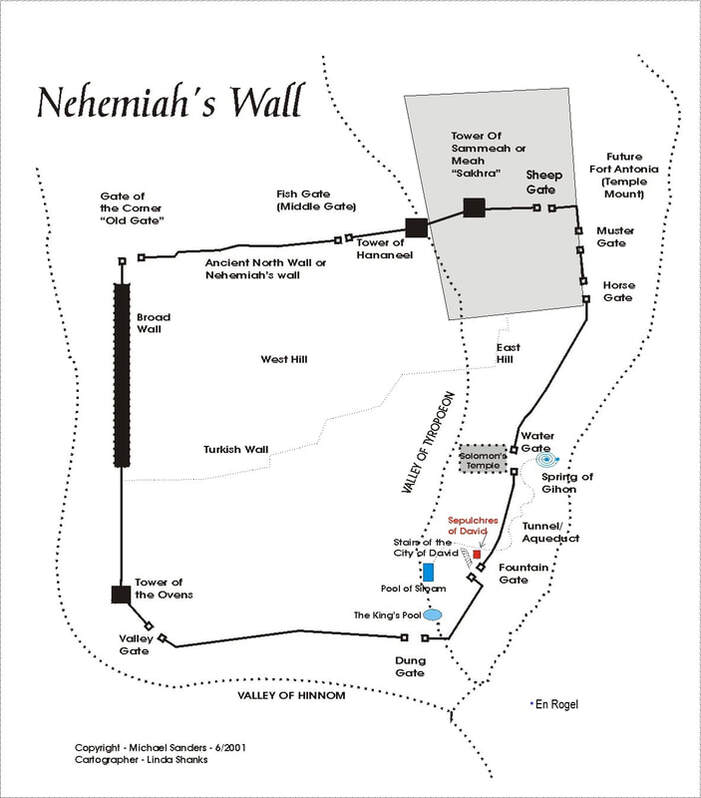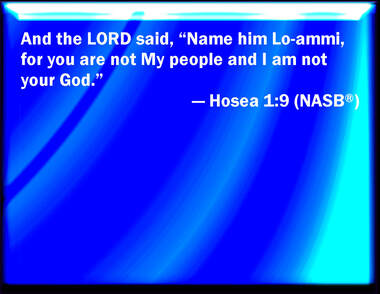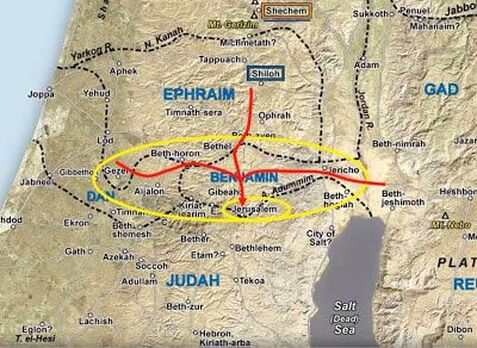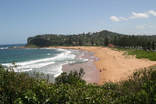
What was uppermost in Nehemiah’s mind when he asked the king to permit him to return to Jerusalem?
Clearly it was protection of ‘the House’—the Temple of God (Neh 2:8).
When Nehemiah spoke to King Artaxerxes he desired a letter from the king to the keeper of the king’s forest ‘to make beams for the gates of the fortress pertaining to the temple.’
The walls were broken down and the gates of the fortress-city—the City of David—had been burned.
Nehemiah’s primary concern as expressed to the king was the vulnerability of the temple. He wanted to repair the gates ‘...pertaining to the House (the Temple). It is also clear in his prayer, where he makes reference to God’s promise to return the people to HaMakom—The Place He had chosen as a ‘dwelling’ for His name (Neh. 1:9)!
On his return to Jerusalem he went on an inspection tour by night (so as not to alert the enemies of God as to his purpose).
That the Temple was in the City of David becomes quite clear when we examine the area Nehemiah encompassed and assesses in his night-time survey.
He left the city by the Valley Gate, went past the Dung Gate in the Valley of Hinnom, and proceeded toward (in the direction of) the Serpent or Dragon Well also called En Rogel in the Kidron Valley and then turned north up the Kidron Valley to the Fountain Gate—possibly the gate by which people exited to walk to the well at En Rogel (see diagram)—or it could be the gate further north that accessed the Gihon Spring (and shown as the water Gate in the accompanying diagram borrowed from http://www.biblemysteries.com/lectures/nihemahwall.htm.)
Nehemiah then retraced his steps and re-entered the city via the Valley Gate.
The area he viewed is the ‘neck’ or peninsula that comprised the City of David.
He was nowhere near (by hundreds of meters) the prominence to the north of the City of David which is today erroneously known as Temple Mount.
If, as seems quite clear, the temple was his major concern—and it was ‘up there’—it seriously begs the question, ‘why did Nehemiah go nowhere near it?’
Here is his report from Nehemiah 2:13-15 in the NASV...
‘So I went out at night by the Valley Gate in the direction of the Dragon’s Well and on to the Refuse Gate, inspecting the walls of Jerusalem which were broken down and its gates which were consumed by fire.
Then I passed on to the Fountain Gate and the King's Pool, but there was no place for my mount to pass.
So I went up at night by the ravine and inspected the wall. Then I entered the Valley Gate again and returned.’
Read 'THE PLACE HaMakom: where Jerusalem's Temples stood' to help you understand this ancient site that Jacob called the House of God (Bethel). See details elsewhere on this site or here.


 RSS Feed
RSS Feed
